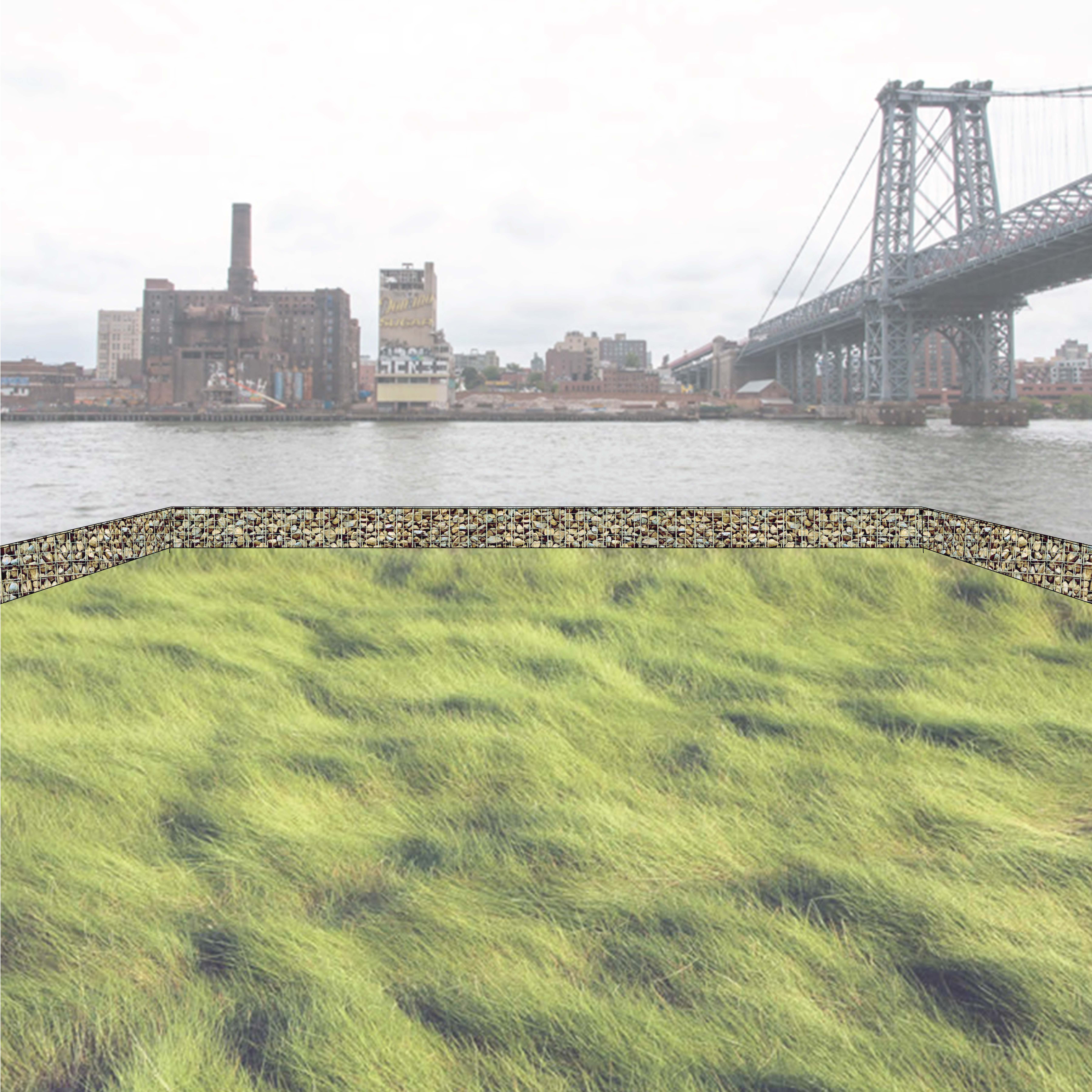7. Softer Ground

Core Studio I, Fall 2016
Site: 14th Street and East River, New York
Studio Critic: Tei Carpenter, Agency—Agency
The East River Estuary Center provides educational programming for elementary- through high-school-aged students in the New York City area. The Center’s focal point is a wetlands frame, a bracketed area of the river which is filtered through an outer protective berm. This filtration berm allows for the collection of scientific data concerning the East River estuary system’s ecological health. The buffering of the interior aquatic space from the estuary at large also allows for the restoration of the enclosed space to its pre-industrial state.


In this enclosed space of pre-industrial estuary “soft ground,” teaching areas will house eelgrass, oysters, and other species native to the East River ecosystem. At the time of colonial settlement, the site of the Center, where Sixth Street meets the riverfront, was the point of entry for two tributary streams into the harbor.


At the deeper end of the framed area, a floating four-story observation “barge” will house the Center’s main study and teaching rooms. The barge will move up and down with the tides, connected by a ramp to the pavilion. Protected from the swift East River currents by the berm, the barge will register the vertical cycles of the tide. The final component of the Center is a system of two research areas, which take the form of enclosed ramps that start at the center of the pavilion and tilt down and curve towards the deeper part of the river to facilitate sample collection for wetlands research.
